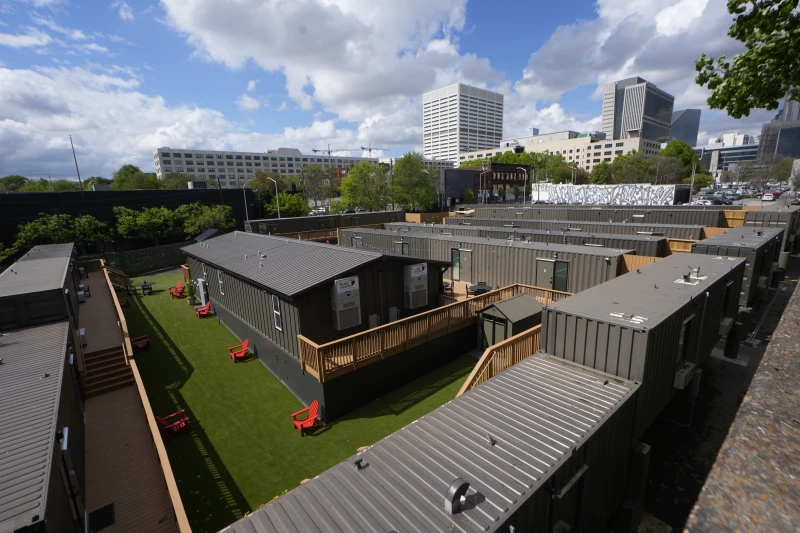In a gloomy part of downtown Atlanta, shipping containers have been turned into a refuge for many who were homeless and now proudly call a former parking lot their home.
The fenced-in micro community named “The Melody” looks nothing like a parking lot anymore. Artificial grass covers the ground where cars used to park. There are plants in pots and red Adirondack chairs scattered around, even a place for dogs to play.
Inside the shipping containers, there are 40 small studio apartments with insulation. Each unit has a bed, heating and cooling system, desk, microwave, mini-fridge, TV, sink, and bathroom. On a recent afternoon, several residents were chatting at a table in the designated smoking area of The Melody.

A dog in a dog run at the Melody greets visitors (Via Ben West/Shutterstock)
“I’m just so thankful,” said Cynthia Diamond, a 61-year-old former cook who uses a wheelchair and used to be homeless for a long time. “I have my own key. I don’t have to worry about anyone knocking on my door, telling me when to eat, sleep, or do anything. I’ll stay here as long as the Lord allows.”
Faced with increasing homelessness and failed attempts to solve it over the years, city officials across the U.S. are turning to fast housing solutions that focus on three things: small, quick, and inexpensive. Officials believe micro communities, unlike shelters, provide stability that, along with supportive services, can better help residents move toward stable housing.


























